Indian Society and Social Issues: May 2024 UPSC Current Affairs | Current Affairs & Hindu Analysis: Daily, Weekly & Monthly PDF Download
Allegations of Child Labour in Trade Negotiations with Australia
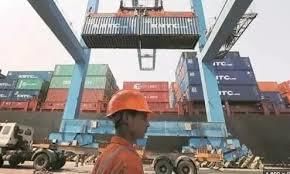
Why in News?
The Indian Ministry of Commerce and Industry has strongly denied allegations of child labour made in a recent report by Australia's Joint Standing Committee on Trade and Investment Growth.
- These allegations have emerged during the ongoing negotiations between India and Australia for the Comprehensive Economic Cooperation Agreement (CECA), which seeks to expand the Economic Cooperation and Trade Agreement (ECTA) signed in 2022.
What are the Allegations Made by the Australian Panel?
- The Australian committee's report raised concerns about child and forced labour in India, based on claims by the Community and Public Sector Union (CPSU) and the State Public Services Federation (SPSF Group).
- The report recommended that the Australian Government include chapters on human rights, labour, and the environment in its trade agreements, adhering to United Nations and International Labour Organisation conventions and declarations signed by Australia.
Facts Supporting Australia’s Claim
- According to the 2023 Global Slavery Index by Walk Free, an international human rights group focused on eradicating modern slavery, India had 11 million people living in modern slavery on any given day in 2021, the highest number of any country.
- As per Census 2011, India’s total child population in the age group 5-14 years is 259.6 million.
- Of these, 10.1 million (3.9% of the total child population) are working as either 'main workers' or 'marginal workers'. Additionally, more than 42.7 million children in India are out of school.
How has India Responded?
- Child Labour is Prohibited: The Indian government has categorically refuted the allegations, stating that existing rules and regulations prohibit child labour and bonded labour.
- Constitutional Protection: India's Constitution protects labour rights and empowers both central and state governments to enact laws like the Bonded Labour System (Abolition) Act, 1976 to safeguard workers' rights, including forming unions and preventing harassment.
- Strict Licensing and Compliance: All business entities in India are licensed by local governing bodies and must comply with labour welfare laws prescribed by the union and state governments.
- Comprehensive Records: Processing units maintain comprehensive records related to processing, quality checks, employee training, and compliance with applicable rules and regulations.
What does India’s Legal Framework Say About Child Labour and Forced Labour?
Constitutional Rights:
- Article 23: Prohibits trafficking in human beings and forced labour, ensuring protection against exploitation and degrading work conditions. It allows compulsory service for public purposes without discrimination based on religion, race, caste, or class.
- Article 24: Prohibits the employment of children under 14 in factories, mines, or hazardous occupations, aiming to protect children from exploitation and ensure their health, development, and access to education. This is closely connected to Article 21A, which ensures the right to education for children aged 6 to 14.
- Article 39: Outlines principles that the State should follow, including ensuring equal rights to livelihood, equal pay for equal work, protection of workers' health, and opportunities for children to develop in a healthy and dignified manner.
Legislations Against Child Labour:
- Child Labour (Prohibition & Regulation) Act, 1986 (amended in 2016): Bans employing children under 14 in all work, with exceptions for family businesses and the entertainment industry under strict conditions. Restricts adolescents (14-18) from hazardous occupations.
- Factories Act, 1948: Prohibits children under 14 from working in factories.
- Mines Act, 1952: Prohibits children under 18 from working in mines.
- Juvenile Justice (Care and Protection of Children) Act, 2015: Considers working children as "in need of care and protection."
- National Policy on Child Labour (1987): Focuses on the rehabilitation of working children.
- Right of Children to Free and Compulsory Education (RTE) Act, 2009: Ensures free education, indirectly preventing child labour by keeping children in school. Government efforts have significantly reduced the number of working children from 1.26 crore in 2001 to 43.53 lakh in 2011.
Legislations Against Forced Labour:
- Bonded Labour System (Abolition) Act, 1976: Criminalises bonded labour, frees all bonded labourers, liquidates their debts, and makes the practice of bondage punishable. Implemented by State Governments with vigilance committees at district and sub-divisional levels. Offenders can face imprisonment for up to three years and fines up to two thousand rupees.
- Central Sector Scheme for Rehabilitation of Bonded Labourer, 2021: Provides financial assistance for the rehabilitation of freed bonded labourers, with a total of 315,302 bonded labourers released and 296,305 rehabilitated from 1978 to January 2023.
What are International Labour Organisation Conventions Regarding Child Labour?
Forced Labour Convention, 1930 (No. 29)
- Key Provisions: Prohibits all forms of forced or compulsory labour, including debt bondage.
- Status in India: Ratified
Equal Remuneration Convention (No. 100)
- Key Provisions: Outlines principles for equal remuneration for work of equal value, regardless of gender. Focuses on gender discrimination in employment.
- Status in India: Ratified
Minimum Age Convention, 1973 (No. 138)
- Key Provisions: Stipulates that the minimum age for work should not be below the age of compulsory schooling and in any case not less than 15 years, with possible exceptions for developing countries.
- Status in India: Ratified
Worst Forms of Child Labour Convention, 1999 (No. 182)
- Key Provisions: Prohibits hazardous work likely to jeopardize children’s physical, mental, or moral health, aiming at the immediate elimination of the worst forms of child labour for children below 18 years.
- Status in India: Ratified
Right to Organise and Collective Bargaining Convention (No. 98)
- Key Provisions: Establishes rules for freedom of unionisation and collective bargaining, protecting workers from discrimination for union activities. Requires promotion of voluntary negotiations between governments and workers.
- Status in India: Not Ratified
PM-EAC Report on Share of Religious Minorities
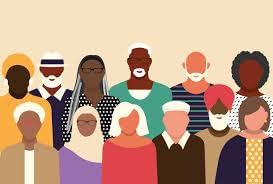
Why in News?
According to a new analysis by the Economic Advisory Council to the Prime Minister (PM-EAC), the percentage of Hindus in India has decreased by 7.82% between 1950 and 2015, while the percentages of Muslims, Christians, and Sikhs have increased.
What are the Key Findings of this PM-EAC Report?
Declining Majority Population across the World:
- From 1950 to 2015, as per the data collected on the religious demographics of 38 OECD countries, 30 of these countries experienced a significant decrease in the proportion of Roman Catholics, the predominant religious group.
- In 167 surveyed countries, the average reduction of majority populations globally during the period 1950-2015 was 22%.
- The decline of the majority religious population was steeper in OECD countries, with an average decline of 29%.
- In Africa, animism or native religion was the dominant religion in 24 countries in 1950.
- By 2015, they are no longer a majority in any of these 24 countries in Africa.
- In the South Asian region, the majority religious group is increasing while minority populations have significantly declined in countries such as Bangladesh, Pakistan, Sri Lanka, Bhutan, and Afghanistan.
Findings for India:
- Decline in Share of Hindu Population: The population of Hindus has declined by 7.82%. As per 2011 census, Hindu population in India as of 2011 is approximately 79.8%.
- Rising Share of Minority Population: The share of Muslim population rose from 9.84% to 14.095% and Christian population rose from 2.24% to 2.36%.
- Sikh population increased from 1.24% to 1.85% and the share of the Buddhist population rose from 0.05%to 0.81%.
- The Jain and Parsi community populations decreased. The share of Jains dropped from 0.45% to 0.36%, and the share of the Parsi population decreased by 85% from 0.03% to 0.0004%.
- Healthy Population Growth Rate: As per the data from National Family Health Survey, India's Total Fertility Rate (TFR) is currently around 2, which is close to the preferred TFR of 2.19. TFR is a reliable indicator for projecting population growth.
- For Hindus, it declined from 3.3 in 1991 to 2.1 in 2015, and further to 1.9 in 2024.
- In Muslims, it declined from 4.4 in 1991 to 2.6 in 2015, and further to 2.4 in 2024.
- Equality for Minorities: In India, minorities experience equal benefits and live a comfortable life, while global demographic shifts remain a cause for concern.
What are Demographic Patterns and its Relevance?
- Demographic patterns
- It refers to the systematic variations and trends observed in human populations.
- These patterns emerge from the study of population dynamics, including factors such as birth rates, death rates, migration, and population composition.
- Relevance:
- Understanding Population Trends:
- Demographic data is used to identify patterns over time. By studying birth and death rates, they can predict population growth or decline.
- It is crucial for planning infrastructure, healthcare, education, and social services.
- Analysing Causes and Consequences:
- It investigates the causes behind population changes. Factors like economic development, education, healthcare, and cultural norms influence birth and death rates.
- Consequences include workforce dynamics, dependency ratios (proportion of non-working age groups), and implications for social security systems.
- Policy Formulation and Implementation:
- Healthcare: Understanding age-specific health needs helps allocate resources effectively.
- Education: Demographics guide educational planning, such as school infrastructure and teacher recruitment.
- Urban Planning: Population distribution affects city infrastructure, housing, and transportation.
- Ageing Population: Policies address the needs of elderly citizens, including pensions and healthcare.\
WHO Report on Global Immunisation
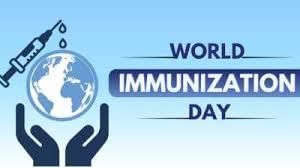
Why in News?
Recently, the World Health Organization (WHO) revealed that global immunization efforts have saved approximately 154 million lives over the past 50 years.
- The report was released during World Immunization Week, preceding the 50th anniversary of the Expanded Programme on Immunization (EPI) in May 2024.
What are the Key Findings of the Report?
Significance of Immunization: Immunization is the most impactful health intervention for ensuring the healthy lives of babies.
- Measles Vaccination:
- Nearly 94 million of the 154 million lives saved since 1974 are due to measles vaccines.
- In 2022, 33 million children missed a measles vaccine dose.
- The global coverage rate is 83% for the first dose and 74% for the second dose, resulting in frequent outbreaks.
- A 95% coverage with two doses is needed to prevent outbreaks.
- Measles vaccination accounts for 60% of lives saved due to immunization and is expected to remain a top contributor.
- Coverage for DPT Vaccine:
- Before EPI, less than 5% of infants had access to routine immunization.
- Today, 84% of infants receive three doses of the diphtheria, tetanus, and pertussis (DTP) vaccine.
- Reduced Infant Deaths:
- 40% reduction in infant deaths from 14 diseases, including diphtheria, hepatitis B, and measles.
- Over 50% reduction in the African region over the past 50 years.
- Eradication and Containment of Diseases:
- Wild poliovirus cases have decreased by over 99% since 1988.
- Type 2 wild poliovirus was eradicated in 1999, and type 3 in 2020.
- India was declared polio-free by WHO in 2014.
- Vaccines for malaria and cervical cancer have been effective in containing these diseases.
- Gain in Full Health Years:
- Each life saved through immunization results in an average of 66 years of full health.
- A total of 10.2 billion full health years have been gained over five decades.
What is the Status of Immunization In India?
- About:
- India’s Universal Immunization Programme (UIP) is one of the world’s largest public health initiatives.
- Annually, over 30 million pregnant women and 27 million children are vaccinated.
- A child is considered fully immunized if they receive all required vaccines within the first year of life.
- Status:
- India was certified polio-free in 2014 and eliminated maternal and neonatal tetanus in 2015.
- New vaccines, such as the Measles-Rubella, Pneumococcal Conjugate Vaccine, and Rotavirus Vaccine, have been introduced.
- Only 65% of children receive full immunization in their first year, according to UNICEF.
- India reduced zero-dose children from 2.7 million in 2021 to 1.1 million in 2022.
- 63% of zero-dose children are in Bihar, Madhya Pradesh, Maharashtra, Rajasthan, and Uttar Pradesh.
- Mission Indradhanush, launched in 2014, aims to vaccinate all unvaccinated and partially vaccinated children under UIP.
- Intensified Mission Indradhanush (IMI) aims to reduce the number of zero-dose children.
- Other Supporting Measures:
- Electronic Vaccine Intelligence Network (eVIN).
- National Cold Chain Management Information System (NCCMIS).
Challenges
- Lack of Access:
- In 2022, 14.3 million infants globally did not receive the first DPT vaccine, indicating a lack of access to immunization.
- Nearly 60% of the 20.5 million under-vaccinated children live in 10 countries, including India.
- Death by Infectious Diseases:
- Contributes significantly to child mortality and morbidity.
- Nearly one million children die before their fifth birthday, many from preventable causes.
- Full Coverage Goal Still to Achieve:
- According to the National Family Health Survey (NFHS)-5 (2019-21), full immunization coverage in India is 76.1%.
- One in four children is missing essential vaccines.
What is the Universal Immunization Programme (UIP)?
Background:
- The Expanded Programme on Immunization was launched in 1978 and renamed UIP in 1985 to extend beyond urban areas.
- UIP has been integral to the National Rural Health Mission since 2005.
About:
- Provides free immunization against 12 vaccine-preventable diseases.
- Nationally against 9 diseases: diphtheria, pertussis, tetanus, polio, measles, rubella, severe childhood tuberculosis, hepatitis B, and meningitis & pneumonia caused by Haemophilus influenzae type B.
- Sub-nationally against 3 diseases: rotavirus diarrhoea, pneumococcal pneumonia, and Japanese encephalitis.
Women in Global Capability Centers

Why in News?
A recent report highlighted that nearly 5 lakh women currently work in Indian Global Capability Centers (GCCs), across GCCs in India.
- Global Capability Centers are offshore units established by multinational corporations to perform a range of strategic functions.
What are the Key Highlights of the Report?
- GCCs Growth:
- India hosts nearly 1,600 GCCs, with a substantial addition of 2.8 lakh employees in 2022-23, expanding its talent base to over 1.6 million.
- Nearly five lakh women currently work in Indian global capability centres (GCCs), comprising 28% of the total 16 lakh employees across GCCs in India. Gender diversity in the deep tech ecosystem stands at 23%.
- Executive and Senior Level Roles:
- Only 6.7% of women hold executive roles in GCCs, and 5.1% in deep tech organisations.
- At the senior level (9-12 years of experience) in GCCs, the representation of women stands at 15.7%.
- Graduate Representation:
- The median representation of women graduates from top engineering universities stands at 25% between 2020-23.
- Challenges and Systemic Barriers:
- Women's attrition is influenced by factors such as family and caregiving responsibilities, limited access to career advancement and leadership opportunities, and poor work-life balance.
What are Global Capability Centers (GCCs)?
About:
- Global capability centres (GCCs) represent offshore establishments set up by companies to deliver a range of services to their parent entities.
- Operating as internal entities within the global corporate framework, these centres offer specialised capabilities including IT services, research and development, customer support, and various other business functions.
- GCCs play a crucial role in capitalising on cost efficiencies, tapping into talent reservoirs, and fostering collaboration between parent enterprises and their offshore counterparts.
- Special Economic Zones (SEZs) can provide a fertile ground for GCCs to flourish by offering several advantages like tax breaks, simplified regulations and streamlined bureaucracy.
Present Status:
- In 2022–23, around 1,600 GCCs made up a market of USD 46 billion, employing 1.7 million people.
- Within GCCs, professional and consulting services are the fastest-growing segment despite only accounting for 25% of India's services exports.
- Their compounded annual growth rate (CAGR) of 31% over the last four years significantly outpaces computer services (16% CAGR) and R&D services (13% CAGR).
Girl Empowerment Mission (GEM)
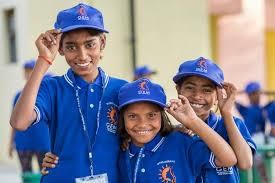
Why in News?
NTPC launches a new edition of the Girl Empowerment Mission (GEM).
More on the news
- National Thermal Power Corporation (NTPC) Limited, launched the latest edition of Girl Empowerment Mission (GEM), its flagship Corporate Social Responsibility (CSR) initiative.
- Corporate social responsibility (CSR) is a self-regulating business model that helps a company be socially accountable to itself, its stakeholders, and the public.
- The program aligns with the Government of India’s Beti Bachao, Beti Padhao (BBBP) initiative.
- BBBP was launched in 2015 to address the declining Child Sex Ratio (CSR) and related issues of women’s empowerment over a life-cycle continuum.
- It aims to tackle gender inequality by nurturing girls’ imaginations and fostering their ability to explore opportunities.
- GEM foster their ability through a 1-month workshop for young girls during the summer holidays.
- The new edition of GEM will add nearly 3,000 meritorious children belonging to underprivileged sections of society at 42 identified locations of the power sector PSU.
National Thermal Power Corporation (NTPC) Limited
- NTPC is one of India’s largest energy conglomerate power utilities. Established in 1975.
- NTPC, is an Indian central Public Sector Undertaking.
- NTPC became a Maharatna company in May 2010.
Girl Empowerment Mission
- GEM was initiated as a pilot project in 2018 with just three locations and 392 participants.
- In 2023 alone, 2,707 girls participated in the workshop across 40 locations of NTPC, spanning 16 states of India.
- With this new edition the total number of children benefiting from the Mission will cross 10,000.
Significance of the Mission
- The Mission focuses on the empowerment of girls through various interventions and aims to identify and nurture their leadership qualities so that they can be future-ready.
- The workshop focuses on health, hygiene, safety, fitness, sports and yoga.
- Mission acclaimed (praised) for its holistic approach to skill development, confidence-building, and mentorships.
Panel to examine issues faced by Queer Community
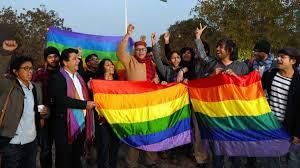
Why in News?
In line with the directions of the Supreme Court (SC), the Centre notified a committee chaired by the Cabinet Secretary to examine the various issues relating to queer community.
Centre Forms Panel To Address Issues of Queer Community
- Formation of Committee: The Centre had given an undertaking to create a committee to set out the rights which will be available to queer couples in unions, when the Supreme Court agreed with the centre’s position and declined to grant legal recognition to same-sex marriages.
- Composition: The Centre notified a six member committee chaired by the Cabinet Secretary and composed of secretaries from the Ministry of Home Affairs; Ministry of Women and Child Development; Ministry of Health and Family Welfare; Ministry of Social Justice and Empowerment and the Law Ministry.
- Objective: The committee shall set out the scope of the benefits which accrue to same-sex couples.
Supreme Court’s Judgement
- Fundamental Right to Marry: On October 17, a five-judge Constitution Bench of the Supreme Court led by Chief Justice of India D Y Chandrachud declined to recognise the right to marry as a fundamental right for same-sex couples.
- Minority Opinion: However, in a minority opinion, the SC ruled in favor of civil unions, stopping short of marriage, to grant legal rights to same-sex couples.
- SC View on Marriage: As per SC, although marriage itself doesn’t give any rights to the parties, it gives certain “intangible benefits in the form of expressive advantages” and “a bouquet of rights” that a married couple can exercise.
- Civil Unions for Queer Couples: Civil Union refers to the legal status allowing same-sex couples specific rights and responsibilities normally conferred upon married couples.
- The SC disagreed with prescribing a choice of civil unions to same sex couples and advocated for the state to facilitate the choice for those who wish to exercise it
Mandate of the Constituted Committee
- Defining entitlements of Queer Couples: The committee shall be set up for the purpose of defining and elucidating the scope of the entitlements of queer couples who are in unions.
- Members: The Committee shall include experts with domain knowledge and experience in dealing with the social, psychological, and emotional needs of persons belonging to the queer community as well as members of the queer community.
- Stakeholder Consultation: The Committee shall before finalizing its decisions conduct wide stakeholder consultation amongst persons belonging to the queer community, including persons belonging to marginalized groups and with the governments of the States and Union Territories.
- Key Topics for Consideration: The Committee shall consider the following legal entitlements of the queer community:
- The right of queer partners to be treated as part of the same family for a ration card and setting up of a joint bank account.
- Right to be considered “next of kin” by medical practitioners, in the event patients who are terminally ill have not executed an Advance Directive.
- Jail visitation rights and the right to access the body of the deceased partner and arrange the last rites.
- Legal consequences such as succession rights, maintenance, financial benefits such as under the Income Tax Act 1961, rights flowing from employment such as gratuity and family pension and insurance.
Protection of Women from Domestic Violence Act 2005
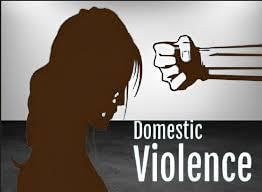
Why in News?
The Delhi High Court recently emphasised the universality of the Protection of Women from Domestic Violence Act of 2005, stating that it applies to all women regardless of their religious or social background.
- The High Court made these observations while dismissing a plea filed by a husband and his relatives. The plea challenged an appellate court order that reinstated a domestic violence complaint filed by the wife.
How Widespread is Domestic Violence in India?
- In India, 32% of ever-married women reported having experienced physical, sexual, or emotional violence by their husbands in their lifetime.
- According to the National Family Health Survey-5 (NFHS-5), 2019-2021, “29.3% of married Indian women between the ages of 18 and 49 have experienced domestic/sexual violence; 3.1% of pregnant women aged 18 to 49 have suffered physical violence during their pregnancy.”
- That is only the number of cases reported by women. There are frequently many more that never make it to the police.
- According to NFHS data, 87% of married women who are victims of marital violence do not seek help.
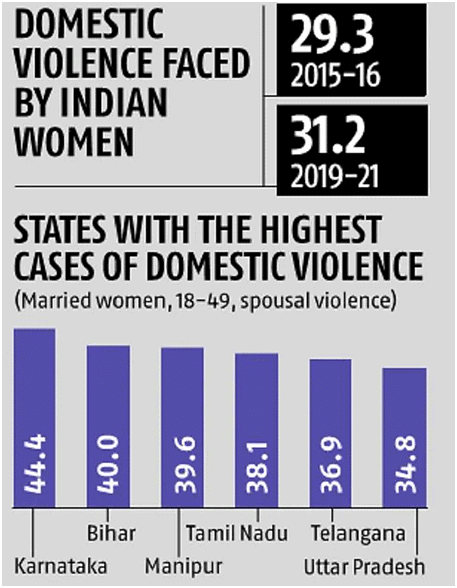
What are the Factors Contributing to Domestic Violence?
- Gender Disparities:
- India's wide gender gap, as reflected in global indices, contributes to a sense of male superiority and entitlement.
- Men may use violence to assert dominance and reinforce their perceived superiority.
- Substance Abuse:
- Alcohol or drug misuse that impairs judgement and exacerbates violent tendencies. Intoxication leads to loss of inhibitions and escalation of conflicts into physical or verbal abuse.
- Dowry Culture:
- There is a strong correlation between domestic violence and the dowry system, with instances of violence increasing when dowry expectations are not met.
- Despite legislation prohibiting dowry, such as the Dowry Prohibition Act 1961, cases of bride burning and violence related to dowry persist.
- Financial stressors and dependency dynamics that exacerbate tensions within relationships.
- Sociocultural Norms:
- Traditional beliefs and practices perpetuate gender roles and household power imbalances.
- Patriarchal systems that prioritise male authority and control over women. Violence often stems from notions of ownership over women's bodies, labour, and reproductive rights, reinforcing a sense of dominance.
- Desire for dominance and exertion of control over a partner, stemming from insecurity or entitlement.
- Social conditioning often portrays marriage as the ultimate goal for women, reinforcing traditional gender roles.
- Indian culture often glorifies women who exhibit tolerance and submission, discouraging them from leaving abusive relationships.
- Socioeconomic Stressors:
- Poverty, and unemployment, create additional stresses within households, increasing the likelihood of violent behaviour.
- Mental Health Issues:
- Untreated mental health conditions such as depression, anxiety, or personality disorders that contribute to volatile behaviour.
- Lack of Education and Awareness:
- Limited understanding of healthy relationship dynamics and rights, leading to acceptance or normalisation of abusive behaviour.
- Ignorance about legal protections against domestic violence or available support services.
- Many women lack awareness of their rights and accept their subordinate status, perpetuating a cycle of low self-esteem and subjugation.
What Legal Frameworks Address Domestic Violence in India?
- Protection of Women from Domestic Violence Act, 2005 (PWDVA): Enacted to safeguard women from various forms of domestic abuse including physical, emotional, sexual, and economic. It provides for protective orders, residence rights, and relief measures.
- Indian Penal Code, 1860 (Section 498A): Addresses cruelty inflicted by husbands or relatives on women, criminalizing acts of cruelty, harassment, or torture within marital relationships.
- Indian Evidence Act, 1872: While not specific to domestic violence, it provides rules governing evidence in legal proceedings, crucial in cases related to such violence.
- Dowry Prohibition Act, 1961: Targets dowry-related offenses, making the exchange of dowry a punishable crime to prevent exploitation of women in marital relationships.
- Criminal Law (Amendment) Act, 2013 (Section 354A): Amended the IPC to include offenses like sexual harassment, relevant in instances of domestic violence against women.
- Juvenile Justice (Care and Protection of Children) Act, 2015: Safeguards the rights and welfare of children, particularly pertinent when they are victims of domestic violence.
- National Commission for Women Act, 1990: Establishes the National Commission for Women (NCW) to uphold and protect women’s rights, including addressing issues of domestic violence.
- The Prohibition of Child Marriage Act, 2006: Aims to prevent child marriages and protect minors, crucial when child brides face domestic violence.
- Domestic Abuse in the Context of Same-Sex Relationships: Current laws predominantly cater to heterosexual relationships, potentially leaving same-sex partners vulnerable to domestic abuse without adequate legal recourse.
- Recognition of Same-Sex Marriages and Legal Implications: Extending legal recognition to same-sex marriages could broaden existing protections, potentially addressing domestic abuse within these relationships.
Why is Enforcement of Laws Against Domestic Violence Challenging?
- Social: Victims often hesitate to report domestic violence due to societal stigma, fear of retaliation, or concerns about family reputation. This silence makes it challenging for authorities to take action.
- Domestic violence incidents are often underreported. Victims may not recognise certain behaviours as abuse or may normalise them.
- Lack of Awareness: Many people, including victims, are unaware of their legal rights and available resources. Without awareness, reporting and seeking legal help become difficult.
- Dependency and Economic Factors: Victims may be financially dependent on their abusers. Fear of economic repercussions can prevent them from seeking legal assistance.
- Inadequate Implementation and Training: Law enforcement agencies and judicial bodies may lack proper training on handling domestic violence cases. Inconsistent implementation of laws hinders effective enforcement.
- Legal Hurdle: Proving domestic violence in court requires substantial evidence. Lack of witnesses or physical evidence can weaken cases.
- Complex Family Dynamics: Domestic violence often occurs within family units. Legal actions can disrupt family relationships, making victims hesitant to pursue legal remedies.
- Cultural and Regional Variations: Different cultural norms and practices affect how domestic violence is perceived and addressed.
- Enforcement strategies must consider these variations.
Way Forward
- A fundamental prerequisite is a transformative change in attitudes towards gender roles and power dynamics. Initiatives targeting both men and women are crucial for fostering mutual respect and dismantling the patriarchal mindset deeply ingrained in society.
- Mandate gender perspective training for stakeholders like law enforcement, service providers, and magistrates to foster empathy and victim-centred approaches.
- Ensure victims have access to free or low-cost legal representation throughout the court process.
- Implement programs that equip survivors with job training and financial literacy skills, fostering economic empowerment.
UNFPA on India’s Population
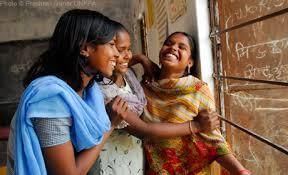
The United Nations Population Fund's (UNFPA) State of World Population - 2024 report revealed that India's population is estimated to double in 77 years.
Key Highlights: India leads globally with an estimated population of 1.44 billion, followed by China at 1.425 billion.
- India's population was recorded at 1.21 billion during the last census, conducted in 2011.
- The report revealed that 24% were aged 0-14, 17% aged 10-19, and 26% aged 10-24. 68% aged 15-64, and 7% aged 65 and above.
- Men have a life expectancy of 71 years and women 74 years.
- The report also highlighted that 30 years of India’s progress in sexual and reproductive health has largely ignored the most marginalised communities globally. It noted that the percentage of child marriage in India was at 23% between 2006-2023.
- Maternal deaths in India have significantly decreased, making up 8% of global maternal fatalities.
- The report highlights that Maternal mortality is high among indigenous groups. Women with disabilities are more vulnerable to gender-based violence.
- Vulnerable groups face greater sexual and reproductive health risks, exacerbated by factors like climate change and caste-based discrimination.
|
38 videos|5258 docs|1111 tests
|
FAQs on Indian Society and Social Issues: May 2024 UPSC Current Affairs - Current Affairs & Hindu Analysis: Daily, Weekly & Monthly
| 1. What are the key findings of the PM-EAC Report on the share of religious minorities? |  |
| 2. What are the main objectives of the Girl Empowerment Mission (GEM)? |  |
| 3. How does the Protection of Women from Domestic Violence Act 2005 help in addressing gender-based violence in India? |  |
| 4. What are the major challenges faced by the Queer Community, as highlighted by the panel appointed to examine their issues? |  |
| 5. How does the UNFPA report on India's population address key demographic trends and challenges in the country? |  |
















